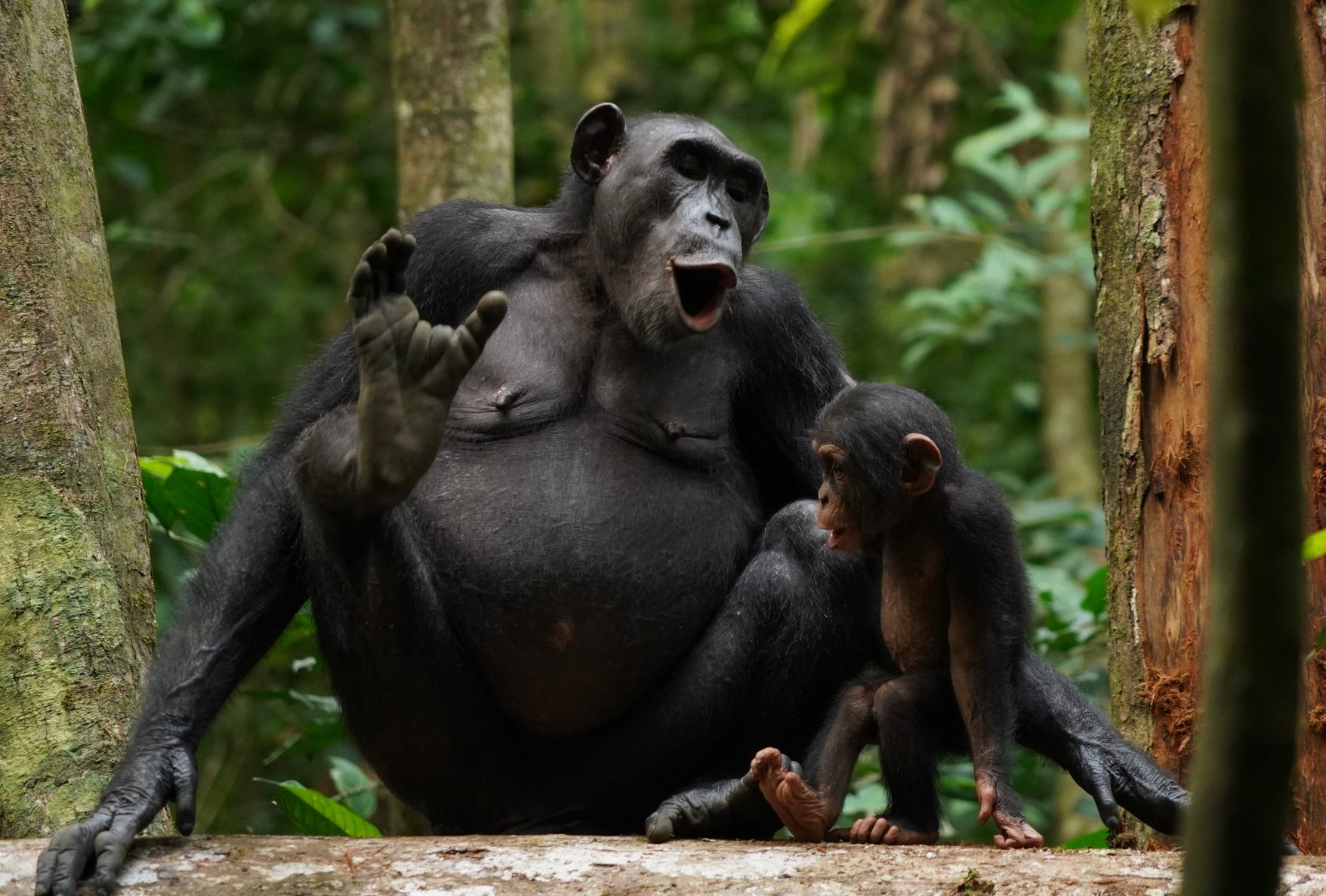According to a study, proper communication of chimpanzees is more complex than expected: our animal relatives also combine calls according to certain rules into a large number of special sound sequences. Further investigations should now clarify the extent to which chimpanzees use these sequences to convey complex information.
In many ways, we are very similar – but one important aspect that distinguishes humans from their closest relatives in the animal kingdom: apes communicate, we use language. Although animals sometimes make meaningful sounds, the human system is capable of transmitting very complex information. Our concept is based on a special combination of sounds in words and words in hierarchically organized sentences. How this special ability arose over the course of evolutionary history is an intriguing question for anthropology. For clues, it makes sense to look at the communication skills of the primates that are our closest relative: the chimpanzee.
Essentially, it turns out that the complexity of human language depends not only on the large and unusual array of possible individual sounds we collect to speak. Because chimpanzees can also produce many different sounds. What is special is the way we combine sounds into words in an orderly manner and group them hierarchically into sentences in order to convey complex information. It was already known in principle that chimpanzees also combine different calls. However, a French-German research team has systematically dealt with the structure and diversity of chimpanzee vocal sequences.
Listen carefully to chimpanzees
Scientists examined recordings of thousands of sounds made by members of three groups of wild chimpanzees in the Tau National Park in Ivory Coast. “This is the first study as part of a larger project. By exploring the complexity of the vocal sequences of free-range chimpanzees, a species with complex social lives similar to those of humans, we hope to learn more about how our unique language evolved,” says co-author Catherine Crockford of the Institute Cognitive Science at the CNRS in Bron, Lyon.
As the scientists reported, they discovered distinctive features during the structural analysis of the chimpanzee’s tone sequence. They were able to identify 390 unique sound sequences, which consist of combinations of up to ten different types of calls from the entire chimpanzee repertoire. The researchers found that the order of calls followed the rules – they were communicated in an orderly manner. It turns out that calls – in combination with certain other calls – always occur at certain positions within the sequence.
Surprisingly complex and organized
Essentially, this ability of chimpanzees to organize discrete units into structured sequences provides a potentially versatile system suitable for extended meaning generation,” the scientists wrote. “Our results show that the chimpanzee’s vocal communication system is more complex and structured than previously thought,” says co-author Tatiana Bortolatto of the CNRS Institute for Cognitive Science.
As the scientists assert, through the study they have now laid the foundation for further investigations that could shed light on chimpanzees’ communication skills and the origins of human language. “The grouping of words or groups of words into sentences – syntax – is a feature of human language. In order to understand their origin, we must first understand exactly how the sounds of great apes are organized,” says co-author Emiliano Zaccarella of the Max Planck Institutes for Evolutionary Anthropology. and the sciences of human cognition and the brain in Leipzig.
Through further investigations, the team now wants to show in more detail to what extent the similarities between chimpanzee’s communication characteristics and human language are. They also plan to investigate an exciting question that almost begs the question: To what extent do our animal relatives use sound sequences to convey a wider range of information to their animal peers?
Source: Max Planck Institute for Evolutionary Anthropology, article: Communication Biology, doi: 10.1038/s42003-022-03350-8

“Alcohol buff. Troublemaker. Introvert. Student. Social media lover. Web ninja. Bacon fan. Reader.”







More Stories
Mission ‘Sunrise III’: Recovering Data Storage in Canada – Science
Ecologists Celebrate New Xesap National Park in Laos | Science
Is the wrong diet making you forget?